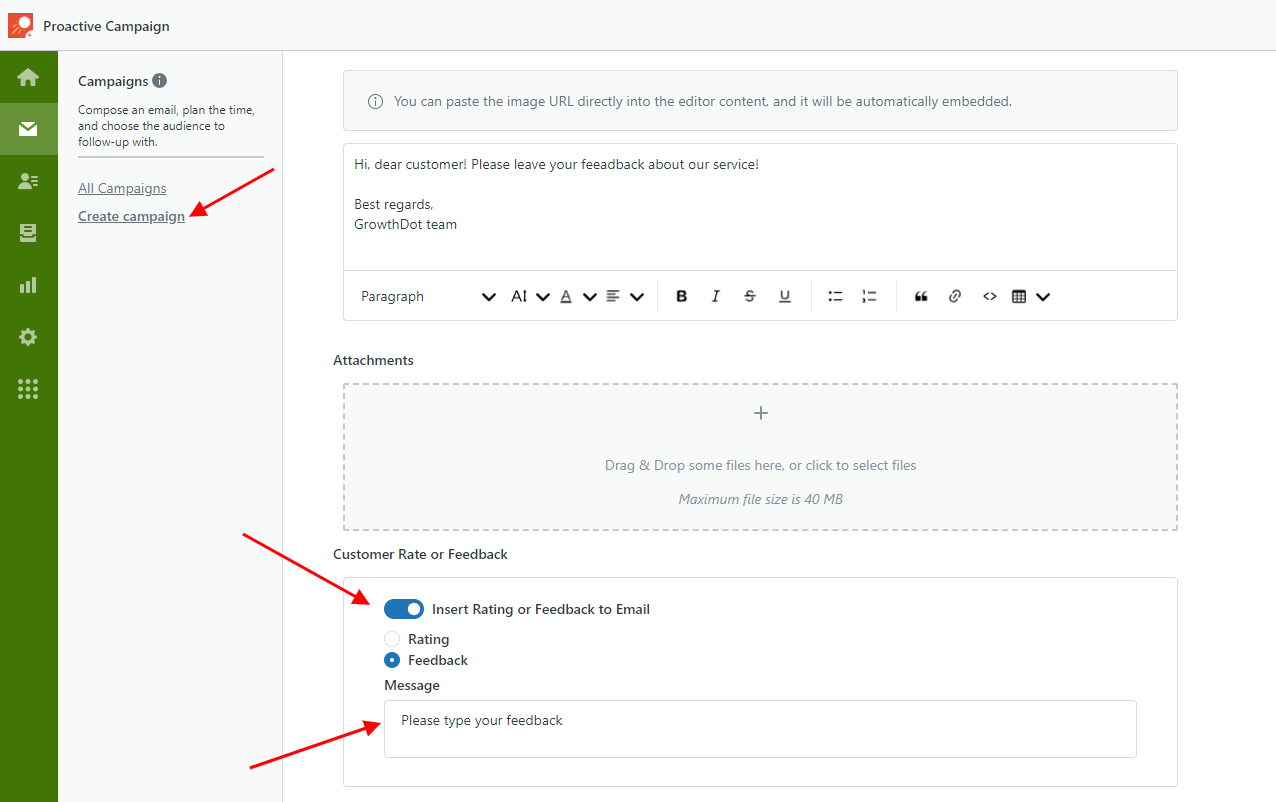Regardless of your niche, getting customer feedback is an excellent way to help you rate your clients’ experience. What is more, asking for feedback is a guaranteed way to help you improve the way you provide services by detecting room for improvement in the way you manage your business.
Understanding the importance of client feedback and how to get it and translate it into useful data is your fool-proof way to success. In this article, we’ll discuss the importance of valuable feedback, different types of customer feedback, and how they can benefit your company. So, keep on reading.
What is Customer Feedback?
Do you ever wonder how your products or services are actually performing? Do people like them? Are they going to come back for more purchases?
It’s pretty challenging to know what your customers think or feel, but customer feedback will make this information accessible.
So, what is actually customer feedback, and what does it consist of?
Customer feedback refers to all the information you can gather from your clients about their experience with your business. The feedback will help reveal your clients’ satisfaction level and help the marketing team develop a better plan to promote your products and services.
Customer feedback forms and data serve as a guide that will help all your team leaders make better business decisions while designing, producing, marketing, and fixing any issues with your products and services. It refers to all the data you can use to understand why your customers chose your products or services and whether they will continue to do so in the future.
Why is Customer Feedback Important?
Without the client feedback, the company deals with every customer as someone who’s making a one-time purchase. This is not a sustainable business model that aims to build brand loyalty for customers who keep coming back to try add-ons or buy new products and services.
Getting feedback from your customers provides the needed input to tweak your business decisions so you can meet customer needs. There’s actually no limit to the kind of input you’ll receive from customer feedback surveys, forms, and ratings that you might ask your clients to fill in after receiving a product or a service.
These tools allow you to know what your clients actually think, so you can work on the problems and even design products and services that cater to their needs. The result is a loyal customer who recommends your business to potential customers and keeps coming back for more.
Product feedback should be the basis of your future product design. When you actually make your customers feel involved, you’ll be able to tackle the issues that your customers are currently facing with any products or services you are providing. You can also introduce a new version or an extra feature by upselling your products.
Advantages of Customer Feedback
Getting feedback from customers benefits your business in many ways, even if you receive negative feedback. It changes your company, regardless of its size, to a customer-centric model that cares about customers’ satisfaction more than anything else.
As a result, your customers will understand that you value them before, during, and after a purchase is made. This will encourage them to think of your company’s name whenever they need a product or service that you sell.
If you don’t know how to ask for feedback from customers or ignore collecting feedback after a sale, you won’t know what your customers really think or feel about what they bought.
They might be facing problems with installing your products or using your services, and this means that they won’t be satisfied with them. Moreover, they’ll spread this negative feedback which can cost you a lot of lost revenues, despite your marketing and sales efforts.
Whether it’s direct or indirect feedback, collecting feedback from customers has a lot of benefits.

1. Learn About Your Customers
You can learn a lot about your customers, starting from who they are, their marital status, age, where they’re from, and what they think about your products or services. This information helps you design better marketing campaigns, promotions, promotional events, and design products that they actually want.
Through customer surveys, social media polls, and web analytics, you’ll be able to tell what excites your customers and what will prompt them to make a purchase in the future.
2. Know Where to Find Your Customers
If you’re confused about how to design your next marketing plan, paying attention to customer feedback might help you.
People can visit your website through Google ads, social media ads, or direct recommendations, and the best way to know where they’re actually coming from is to ask them.
This will help you design your upcoming marketing strategy to target potential customers where they’re likely to be. Moreover, this will help you decide on the marketing channels that are yielding better results, so you can invest more in them.
3. Increase Sales
64% of marketers agree that word-of-mouth marketing is the most effective type of marketing and can result in 5 times more sales than paid ads.
In addition to this form of direct feedback, potential customers will value a positive online review, which will significantly impact your customer base. Gathering feedback from customers helps you learn about their needs and priorities, directing this valuable information toward the sales team.
4. Retain Customers
Customers like to feel heard and appreciated, especially after making a purchase. According to the latest studies, 82% of companies agree that retention is cheaper than acquisition. This means that paying attention to feedback to retain customers guarantees that your customers will always favor your products and services.
Sometimes customer faces a problem with their purchase. Consequently, knowing that you’re improving their experience when you collect customer feedback will prompt them to give your brand another chance.
5. Increase Customer Loyalty
Paying attention to feedback boosts customers’ loyalty. Your clients will be less likely to think of a competitor and are more likely to recommend your business to other people in their network. So, by sending out surveys and conducting customer interviews, you’ll know exactly why your customers would or wouldn’t recommend your business or consider it for a future purchase.
6. Boost Customer Satisfaction
Happy customers are more likely to make future purchases. They’re also more likely to recommend your business to others, and this is one of the reasons keeping track of customer satisfaction is extremely important. Without feedback, you won’t be able to tell if your customers are satisfied after making a purchase or if they’re dealing with an issue.
7. Design Better Products and Services
Receiving feedback from customers will have a huge impact on your product roadmap. You can tell what your customers like or hate about your product or service, and you can design better products in the future to cover the clients’ needs and solve their problems. You might also be able to sell another product or solution as an add-on to a current purchase to improve the user experience.
8. Improve Customer Experience
Customers will explicitly tell you how to improve their experience. And by listening to them, you can boost your sales by retaining loyal customers. Knowing how to ask for customer reviews after a sale or analyzing customer service feedback will help you pinpoint the exact areas where you need to pay more attention.
9. Fix Any Issues
Receiving negative feedback will actually help your business bloom. By listening to what’s driving your customers away and fixing the issues they’re facing, your customers will feel heard.
As a result, they’re less likely to go to the competitor and prefer to consider your business for another chance. This is why you should contact the customer after a negative review. Also, listen to the issue, and inform them of when you’ll contact them again after fixing whatever problem they’re facing.
10. Make Informed Business Decisions
One of the most important benefits of customer feedback is that it helps you make informed business decisions. Analyzing consumer feedback will help you enhance products, ditch specifications, and make improvements that your clients are asking for. As a result, you’ll be able to design better products and services and improve the experience your customers have with your brand.
11. Help Communicate Customer Insights to All Departments
Customer insights will reach all parts of your organization beyond the customer care representatives. All stakeholders will be informed of clients’ needs and work towards satisfying them accordingly.
12. Products and Services Reach the Market Faster
Making better and more informed decisions will help get your products and services faster to the market. Moreover, customers will realize the value of your products and services faster, so they’re more likely to make a purchase.
How to Get Feedback from Customers
There are different ways to receive feedback from customers depending on where they are. You also select the method to collect customer feedback based on why you’re actually seeking this input.
Create a detailed plan of the desired outcomes and clear intentions for collecting information. That will help you to precisely determine how to collect feedback from customers and what the tools are that will help you in this process.
According to research, only one in 26 clients is likely to leave customer feedback, mainly because they don’t feel that this feedback will be taken into consideration.
Unfortunately, this means that most unsatisfied customers will simply leave your business without voicing their concerns. Besides they won't talk about the problems they’ve faced on your website or after actually buying your products and services.
However, learning how to get customer feedback using multiple tools and methods will help you gather data that you can later use to improve your manufacturing, marketing, and sales processes. Here are various ways to receive information from your customers.
Direct Feedback
Direct feedback involves all the tools you actively use to ask for consumers’ feedback and impressions after buying, receiving, and using your products or services. In addition, because you design the tool, you can specifically tailor it to answer certain questions that can help you make better business decisions in the future.
These direct customer feedback tools include surveys, emails, star ratings, and interviews you design with the marketing and customer care departments to gain insights into the user experience. Moreover, these tools might include closed-end or open-end response questions to help you collect better data from your customers.
Surveys are usually sent to old, current, and potential clients via mail or post. For example, you might ask them about their past experiences, the issues they’ve faced, what they’d like to have in future products, and whether they’d recommend your business to someone else or not. You can also include surveys in your custom-made loyalty program that grants customers some points.
You can also use various tools like Proactive Campaigns to receive direct mass feedback from your customers. Using this Zendesk app, you can send personalized mass follow-up email campaigns in a single click, pinpointing the points you want to ask about according to your target audience. The replies are divided into ratings and feedback, so you can access the information you need. You can also send a link to the client’s email with a star rating after a determined period that would allow them to use your product and services and evaluate them.

Indirect Feedback
Indirect Feedback is different because it’s unsolicited. Nevertheless, your business can access data through this type of feedback, analyze it, find patterns, and act accordingly.
Types of indirect feedback include posts that your clients will publish on their social media pages or groups and what they’ll write on review sites. In addition, people can volunteer to share a detailed experience if someone is mentioning that they want to try your product or service or are facing an issue that the business you run can solve. Potential customers are likely to trust indirect feedback because it feels authentic and honest.
You can analyze web analytics to determine how visitors to your website behave after browsing your content. For example, you’ll be able to find the best sellers, which products or services result in more returns and refund requests. Also, it's important how fast people are likely to make a second purchase after already paying for a first one.
Types of Customer Feedback
Deciding on how to get feedback from your clients is a decision that several stakeholders should discuss. It depends on the issues you want to address, the goals you want to attain, and the plan you want to come up with to improve your overall market share.
Since people are likely to behave differently towards multiple tools, you can implement various methods at the same time. There are several asking-for feedback examples that you can use depending on the nature of your business, what you actually want to achieve, and the status of your clients.
1. Structured and Solicited Customer Feedback
There are two types of solicited feedback — active and passive. In passively solicited feedback, you wait for your clients to come to you with their positive or negative experiences after buying your products or services. In actively solicited feedback, you go to them.
Structured and solicited customer feedback help you gather accurate personal data about your customers and their overall experience with your brand. You can customize your review section or send an email with these points for qualitative feedback and analyze your clients’ responses.
2. Unstructured and Solicited Customer Feedback
Unstructured data include social media posts on your brand’s page, the comments section, and forum posts that you might respond to provide your customers with some valuable information. Although this data is beneficial, it’s more challenging to analyze and takes more time to categorize and respond.
3. Structured and Unsolicited Customer Feedback
The company doesn’t design structured and unsolicited customer feedback. Yet, it provides valuable and authentic information that you can later use to improve business operations.
Review sites on Google or pages on Facebook can rate your company through polls, surveys, or even ask people to write their opinions. Following up with social media is one of the ways to analyze this kind of data and use it to make better business decisions.
You can also get structured yet unsolicited customer feedback from listening to audio calls or watching video calls. Customers may be asked to provide some personal information before writing an open-end review or answering a customer support call.
4. Unstructured and Unsolicited Customer Feedback
Reviews on forum posts, social media posts, and comments on review sites are all forms of unstructured and unsolicited customer feedback. For example, customers might simply tag your business in a X, Facebook, or Instagram post to express how satisfied or unsatisfied they are with your company. You can also get unstructured and unsolicited data from live chats, YouTube reviews, and call center transcripts.
Unstructured and unsolicited data is quite challenging to study and benefit from because, unlike structured data, unstructured data can help you identify problems that you didn’t know existed. As a matter of fact, according to Forbes, a company that is able to integrate unstructured data from a variety of sources is more able to identify customer patterns and improve customer relationships.
5. Net Promoter Score (NPS)
The Net Promoter Score is an index that ranges from -100 to 100 and refers to your customers’ willingness to recommend your company’s products and services to other people in their network or community.
Using this score, you can measure customers’ overall satisfaction level with what you offer through a group of questions. Customers get to pick a single answer from an 11-point scale, where 0 refers to highly unlikely while 10 refers to most likely.
According to this feedback tool, customers are categorized into three categories.
- Detractors are the people who are unlikely to recommend your business and will usually give your brand a score of 6 or less. They’ll most probably not buy again from your company and will not recommend it to anyone else. They can also harm your business through their negative feedback.
- Passives usually give a score of 7 or 8. They’re partially satisfied with your company but will most probably switch to the competitor if they’ve received a better offer.
- Promoters give your company a score of 9 or 10. They’re extremely satisfied with what you offer and will recommend your company’s products and services.
The NPS is calculated by deducting the percentage of detractors from the promoters. In most cases, your score will never be on either end of the spectrum but somewhere in between.
6. Customer Satisfaction or CSAT
Customer satisfaction is a metric that evaluates the customer’s experience and how happy they are with the product or the company itself. CSAT is measured using a specific survey that asks the customer how satisfied they are.
In most cases, a CSAT uses a scale that ranges from 1 to 5, where 1 refers to extremely unsatisfied and 5 refers to extremely satisfied. You can calculate your CSAT score through follow-up calls, in-app surveys, and email surveys.
To calculate your CSAT score, you should make your questions short, specific, and simple. The score is the percentage of the positive scores of 4 or 5 out of all the scores you’ve got.
7. Customer Effort Score or CES
Customer effort score surveys ask your customers about how easy or difficult it is to get an issue resolved. This includes replacing or returning an order or receiving technical support.
CES is a great indicator of how likely or unlikely customers will recommend your product. For example, if customers have to call several times, use different channels, or speak with multiple customer support agents to get one issue resolved, your CES will drop.
For best results and to measure actual customer loyalty, it’s best to use CES as a feedback tool with other tools like NPS. CES should be simple and sent after a specific interaction, as this will help you determine the exact step or process that you need to work on.
Best Practices for Collecting Feedback From Customers
Customer feedback will reveal the strengths and weaknesses of your company. And there are several ways that you can use to implement your customer feedback strategy. Here are some of them:
- Regularly call your customers
- Provide live chat support
- Monitor social media channels and activity
- Collect feedback from your live chat sessions
- Use icons to make it easy to leave feedback
- Provide dedicated customer feedback forms
- Use email surveys for new customers
- Ask for feedback on the order confirmation page
- Request for feedback at the point of service
- Ask for feedback right after making a purchase
- Create a feedback area for cart abandonment
- Study Facebook reactions and emojis, which people use to respond to a post
- Offer a gift or prize in return for feedback
- Measure customer service performance analytics to increase customer satisfaction
- Provide an active online community with support
- Review feedback on your competitor’s sites
- Display any positive customer feedback
- Use negative feedback to showcase professionalism
- Make your online store more human by developing a unique concept and displaying social responsibility
Key Takeaways
Customer feedback is the only way to increase sales by retaining clients and improving customer loyalty. You should understand that your clients are willing to share their overall experience with your company as long as you provide the proper channels.
The information you obtain from clients can help you detect your company’s strengths and weaknesses, allowing you to tackle any issues that might drive your customers to competitors.
There are several types of customer feedback and multiple tools that you can use to obtain valuable business-related data. The combination of these tools helps you draw a clear image of your company’s actual performance and what you need to work on.






